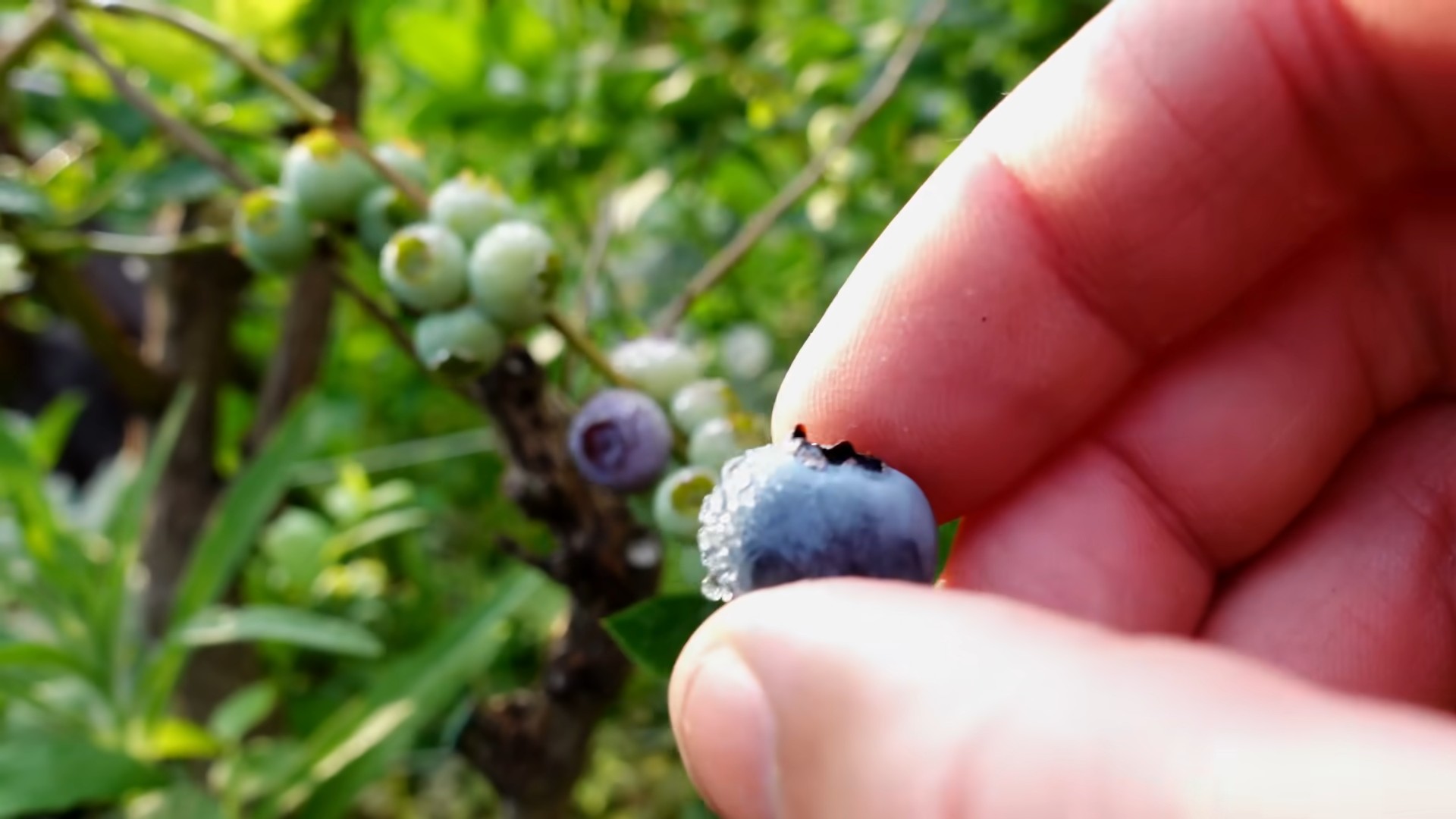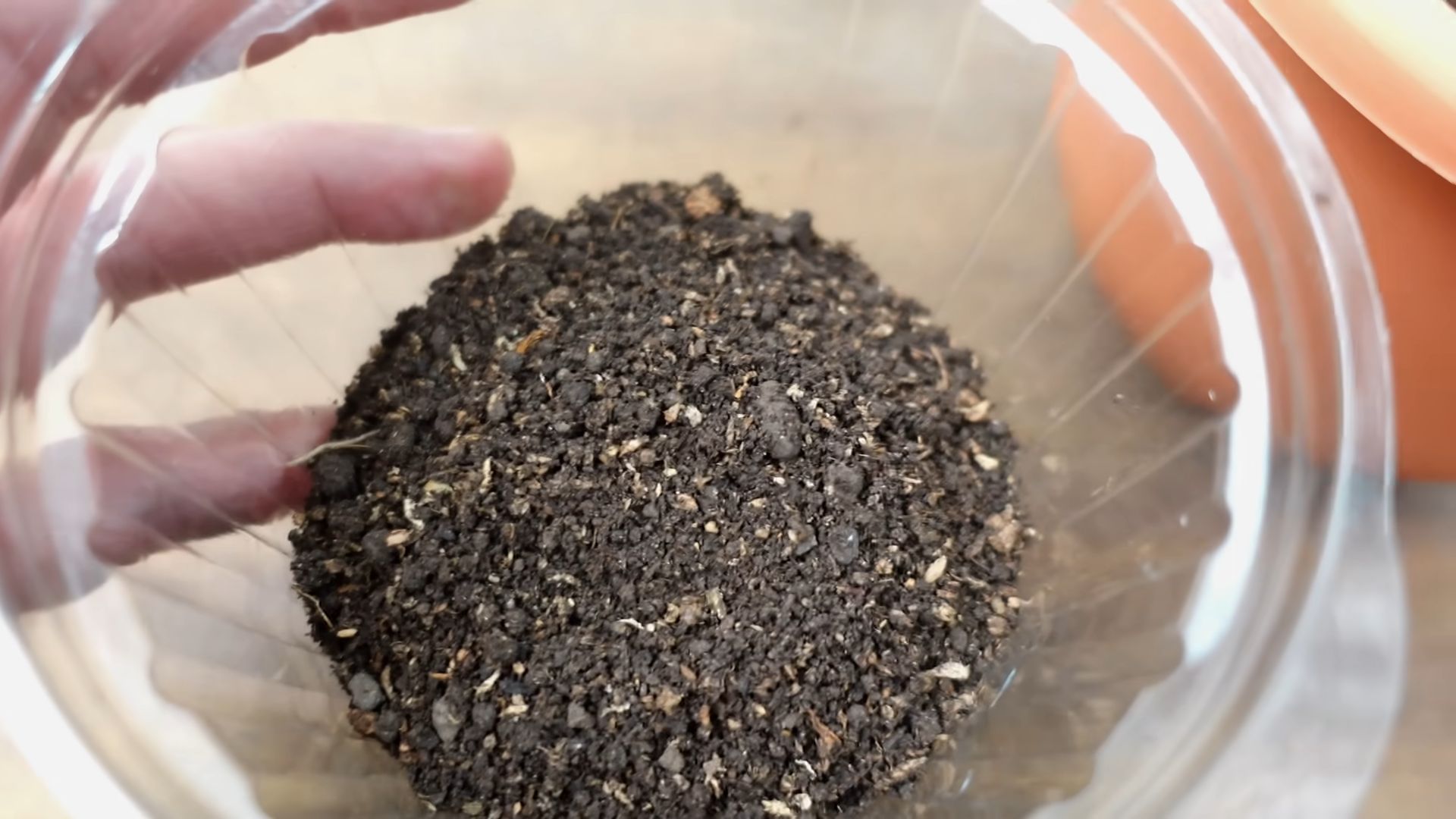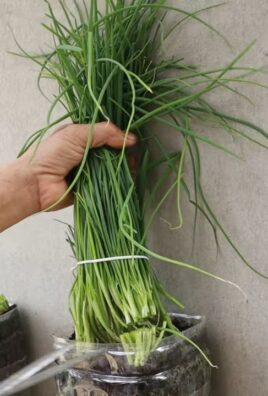Grow Blueberries at Home – imagine plucking juicy, sun-ripened blueberries straight from your own backyard! For centuries, blueberries have been cherished, not just for their delicious taste, but also for their incredible health benefits. Native American cultures revered them, using them in traditional medicines and foods. Now, you might think growing these little powerhouses is only for experienced farmers, but I’m here to tell you it’s totally achievable with a few simple DIY tricks and hacks!
Let’s be honest, store-bought blueberries can be expensive and sometimes lack that fresh, vibrant flavor. Plus, there’s something incredibly satisfying about nurturing your own food from seed (or in this case, a young plant!) to table. This article is your ultimate guide to successfully grow blueberries at home, even if you have limited space or a less-than-green thumb. I’ll share my favorite DIY tips for creating the perfect acidic soil, choosing the right varieties for your climate, and protecting your precious berries from hungry birds. Get ready to enjoy a bountiful harvest of homegrown blueberries – it’s easier than you think!

Growing Blueberries at Home: A Comprehensive DIY Guide
Hey there, fellow gardening enthusiasts! Ever dreamt of plucking juicy, sweet blueberries straight from your own backyard? Well, dream no more! Growing blueberries at home is totally achievable, even if you don’t have a sprawling farm. It takes a little planning and effort, but trust me, the reward of homegrown blueberries is absolutely worth it. I’m going to walk you through everything you need to know, from choosing the right variety to harvesting your delicious bounty. Let’s get started!
Choosing the Right Blueberry Variety
Before you even think about digging a hole, you need to pick the right blueberry variety for your climate and space. Different varieties thrive in different regions, so doing your research is key.
* Highbush Blueberries: These are the most common type and are generally divided into Northern and Southern Highbush.
* Northern Highbush: These are cold-hardy and perfect for cooler climates with cold winters (think USDA zones 3-7). They need a certain number of chill hours (hours below 45°F) to produce fruit. Popular varieties include ‘Bluecrop,’ ‘Duke,’ and ‘Elliott.’
* Southern Highbush: These are better suited for warmer climates with milder winters (USDA zones 7-10). They require fewer chill hours than Northern Highbush. Great choices are ‘O’Neal,’ ‘Star,’ and ‘Emerald.’
* Rabbiteye Blueberries: These are native to the Southeastern United States and are known for being vigorous and productive. They’re a good option for warmer climates (USDA zones 7-9) and are more tolerant of less-than-ideal soil conditions than Highbush varieties. ‘Brightwell,’ ‘Tifblue,’ and ‘Powderblue’ are popular Rabbiteye choices.
* Lowbush Blueberries: These are wild blueberries that are native to northeastern North America. They’re very cold-hardy (USDA zones 3-7) and are typically grown commercially. They’re not as commonly grown in home gardens, but if you live in a colder region and want a truly wild blueberry experience, they might be worth considering.
Things to Consider When Choosing a Variety:
* Chill Hours: This is the number of hours below 45°F that a blueberry variety needs to set fruit. Make sure the variety you choose matches the chill hours in your area.
* Size: Blueberry bushes can range in size from a few feet tall to over 10 feet tall. Consider how much space you have available when choosing a variety.
* Taste: Different varieties have different flavor profiles. Some are sweeter, some are tart, and some have a more complex flavor. Read reviews and try to sample different varieties if possible.
* Disease Resistance: Some varieties are more resistant to diseases than others. If you live in an area with a lot of blueberry diseases, choose a disease-resistant variety.
* Pollination: While some blueberry varieties are self-pollinating, you’ll get a better yield if you plant two or more different varieties that bloom at the same time. This allows for cross-pollination, which results in larger and more abundant fruit.
Preparing the Soil: Acidity is Key!
Blueberries are acid-loving plants, meaning they need a soil pH between 4.5 and 5.5 to thrive. This is probably the most crucial step in growing blueberries successfully. Most garden soils are not acidic enough, so you’ll need to amend the soil before planting.
1. Test Your Soil: Before you do anything, test your soil pH. You can buy a soil testing kit at your local garden center or send a soil sample to your local extension office for professional testing. This will give you an accurate reading of your soil pH and nutrient levels.
2. Amend the Soil: If your soil pH is above 5.5, you’ll need to lower it. Here are a few ways to do that:
* Sulfur: This is the most common way to lower soil pH. Follow the instructions on the package carefully, as too much sulfur can be harmful to plants. It takes time for sulfur to work, so apply it several months before planting.
* Sphagnum Peat Moss: This is a natural soil amendment that is acidic. Mix it into the soil before planting. It also helps to improve drainage and water retention.
* Acidifying Fertilizers: Use fertilizers specifically formulated for acid-loving plants, such as azaleas and rhododendrons. These fertilizers contain sulfur and other nutrients that will help to lower the soil pH.
3. Improve Drainage: Blueberries need well-drained soil. If your soil is heavy clay, amend it with organic matter, such as compost, shredded bark, or pine needles, to improve drainage. Raised beds are also a great option for growing blueberries in heavy clay soil.
4. Add Organic Matter: Blueberries benefit from soil rich in organic matter. Mix plenty of compost, aged manure, or other organic matter into the soil before planting. This will help to improve soil fertility, drainage, and water retention.
Planting Your Blueberry Bushes
Now that you’ve chosen your variety and prepared the soil, it’s time to plant your blueberry bushes!
1. Choose a Sunny Location: Blueberries need at least 6 hours of sunlight per day to produce fruit. Choose a location that gets plenty of sun.
2. Dig the Hole: Dig a hole that is twice as wide as the root ball and just as deep.
3. Prepare the Root Ball: Gently remove the blueberry bush from its container. If the roots are circling the pot, gently loosen them with your fingers or a knife. This will encourage the roots to grow outward into the surrounding soil.
4. Plant the Bush: Place the blueberry bush in the hole, making sure the top of the root ball is level with the surrounding soil. Backfill the hole with the amended soil, gently tamping it down.
5. Water Thoroughly: Water the blueberry bush thoroughly after planting. This will help to settle the soil and encourage root growth.
6. Mulch: Apply a 2-4 inch layer of mulch around the blueberry bush. Mulch helps to retain moisture, suppress weeds, and regulate soil temperature. Pine needles, wood chips, or shredded bark are all good choices for mulch.
Caring for Your Blueberry Bushes
Once your blueberry bushes are planted, they’ll need regular care to thrive.
1. Watering: Blueberries need consistent moisture, especially during the growing season. Water deeply and regularly, especially during dry spells. Avoid overwatering, as this can lead to root rot.
2. Fertilizing: Fertilize your blueberry bushes in the spring with an acid-loving fertilizer. Follow the instructions on the package carefully. Avoid over-fertilizing, as this can damage the plants.
3. Pruning: Pruning is essential for maintaining the health and productivity of your blueberry bushes. Prune in late winter or early spring, before the buds start to swell.
* Remove Dead, Damaged, or Diseased Wood: Start by removing any dead, damaged, or diseased wood. This will help to prevent the spread of disease and improve air circulation.
* Thin Out the Bush: Thin out the bush by removing some of the older canes. This will encourage new growth and improve fruit production.
* Shape the Bush: Shape the bush by removing any crossing or rubbing branches. This will help to improve air circulation and prevent damage to the branches.
4. Weed Control: Keep the area around your blueberry bushes free of weeds. Weeds compete with blueberries for water and nutrients. Hand-pull weeds or use a hoe to remove them. Avoid using herbicides, as they can damage the blueberry bushes.
5. Pest and Disease Control: Blueberries can be susceptible to a variety of pests and diseases. Monitor your plants regularly for signs of problems. If you notice any pests or diseases, take action to control them.
* Birds: Birds love blueberries! Protect your bushes with netting to prevent them from eating your fruit.
* Japanese Beetles: These pests can damage the leaves of blueberry bushes. Hand-pick them off the plants or use an insecticide to control them.
* Blueberry Maggot: This pest can infest the fruit. Use traps or insecticides to control them.
* Fungal Diseases: Blueberries can be susceptible to a variety of fungal diseases, such as powdery mildew and anthracnose. Prevent these diseases by providing good air circulation and avoiding overwatering. Use a fungicide if necessary.
Harvesting Your Blueberries
The moment you’ve been waiting for! Harvesting your own blueberries is incredibly satisfying.
1. When to Harvest: Blueberries are typically ready to harvest in mid-summer. The berries should be a deep blue color and should easily detach from the bush.
2. How to Harvest: Gently pick the blueberries from the bush. Avoid pulling or yanking on the berries,

Conclusion
So, there you have it! Growing blueberries at home isn’t just a gardening project; it’s an investment in your health, your taste buds, and your connection to nature. Forget those expensive, often lackluster berries from the grocery store. Imagine stepping into your backyard and harvesting plump, juicy, perfectly ripe blueberries whenever you crave them. The satisfaction is unparalleled.
This DIY trick, focusing on soil acidity and proper drainage, is the key to unlocking a bountiful blueberry harvest. It’s not about complicated techniques or expensive equipment; it’s about understanding the specific needs of these wonderful plants and providing them with the optimal environment to thrive. By following these simple steps, you’re setting yourself up for years of delicious rewards.
But don’t just take our word for it! We encourage you to embark on this blueberry-growing adventure. Start small, perhaps with just one or two plants, and experiment with different varieties to find your favorites. Consider adding organic matter like peat moss or pine bark to further enhance the soil’s acidity and drainage. You could even try companion planting with azaleas or rhododendrons, which share similar soil preferences and can create a beautiful and harmonious garden ecosystem.
Think about the possibilities: blueberry muffins bursting with flavor, homemade blueberry jam that captures the essence of summer, or simply a handful of fresh blueberries enjoyed straight from the bush. The possibilities are endless!
And remember, gardening is a journey, not a destination. There will be challenges along the way, but the rewards are well worth the effort. Don’t be afraid to experiment, adapt, and learn from your experiences.
We’re confident that with a little care and attention, you’ll be enjoying homegrown blueberries in no time. So, grab your gardening gloves, prepare your soil, and get ready to experience the joy of growing your own delicious, healthy blueberries.
We can’t wait to hear about your success! Share your experiences, tips, and photos with us in the comments below. Let’s create a community of blueberry enthusiasts and inspire others to discover the magic of growing their own food. Happy gardening!
Frequently Asked Questions (FAQ)
Why is soil acidity so important for growing blueberries?
Blueberries are acid-loving plants, meaning they thrive in soil with a pH between 4.5 and 5.5. This acidity is crucial for their ability to absorb essential nutrients from the soil, particularly iron. In alkaline or neutral soil, iron becomes less available to the plants, leading to a condition called iron chlorosis, characterized by yellowing leaves and stunted growth. Maintaining the correct soil pH is the single most important factor in successfully growing blueberries.
How do I test the pH of my soil?
There are several ways to test your soil’s pH. The easiest and most affordable option is to use a home soil test kit, which can be purchased at most garden centers. These kits typically involve mixing a soil sample with a solution and comparing the resulting color to a chart. For a more accurate and detailed analysis, you can send a soil sample to a professional soil testing laboratory. Your local agricultural extension office can provide information on accredited labs in your area.
What if my soil is not acidic enough?
If your soil pH is above 5.5, you’ll need to amend it to increase its acidity. The most common and effective method is to incorporate sulfur into the soil. The amount of sulfur needed will depend on your soil type and current pH level, so it’s best to follow the instructions on the sulfur product label. Other options include adding peat moss, pine bark, or acidic fertilizers specifically formulated for acid-loving plants. Remember to test your soil pH regularly and adjust as needed.
What are the best blueberry varieties to grow at home?
The best blueberry varieties for your home garden will depend on your climate and personal preferences. Some popular and reliable varieties include:
* **’Bluecrop’:** A mid-season variety known for its high yields and excellent flavor.
* **’Elliott’:** A late-season variety that extends the blueberry harvest.
* **’Sunshine Blue’:** A compact, semi-dwarf variety that’s well-suited for containers and warmer climates.
* **’Pink Lemonade’:** A unique variety that produces pink berries with a sweet, slightly tart flavor.
* **’Duke’:** An early-season variety with large, flavorful berries.
Research the specific characteristics of each variety and choose those that are best suited to your growing conditions and taste preferences.
How often should I water my blueberry plants?
Blueberry plants need consistent moisture, especially during the growing season. Water deeply and regularly, aiming to keep the soil consistently moist but not waterlogged. The frequency of watering will depend on your climate, soil type, and the age of the plants. Young plants will need more frequent watering than established plants. A good rule of thumb is to water when the top inch of soil feels dry to the touch. Mulching around the plants can help retain moisture and reduce the need for frequent watering.
Do blueberry plants need fertilizer?
Yes, blueberry plants benefit from regular fertilization, especially during the growing season. Use a fertilizer specifically formulated for acid-loving plants, such as azalea or rhododendron fertilizer. Apply the fertilizer in early spring, just before new growth begins, and again in late spring or early summer. Follow the instructions on the fertilizer label carefully to avoid over-fertilizing, which can damage the plants.
How do I protect my blueberries from birds?
Birds love blueberries just as much as we do! To protect your crop, you’ll need to take measures to deter them. The most effective method is to cover your blueberry bushes with netting. Choose a netting with small holes to prevent birds from getting tangled. Other options include using bird scare devices, such as reflective tape or plastic owls, but these are often less effective than netting.
Can I grow blueberries in containers?
Yes, blueberries can be successfully grown in containers, especially if you have limited space or poor soil conditions. Choose a large container with good drainage and fill it with an acidic potting mix specifically formulated for acid-loving plants. Select a compact or semi-dwarf variety that’s well-suited for container growing. Water regularly and fertilize as needed.
How do I prune my blueberry plants?
Pruning is essential for maintaining the health and productivity of your blueberry plants. Prune annually in late winter or early spring, before new growth begins. Remove any dead, damaged, or crossing branches. Thin out the center of the bush to improve air circulation and sunlight penetration. Remove some of the older, less productive canes to encourage new growth.
How long does it take for blueberry plants to produce fruit?
Most blueberry plants will start producing fruit within one to three years of planting, depending on the variety and the size of the plant at the time of planting. It may take several years for the plants to reach their full production potential. Be patient and provide your plants with the care they need, and you’ll be rewarded with years of delicious blueberries.




Leave a Comment